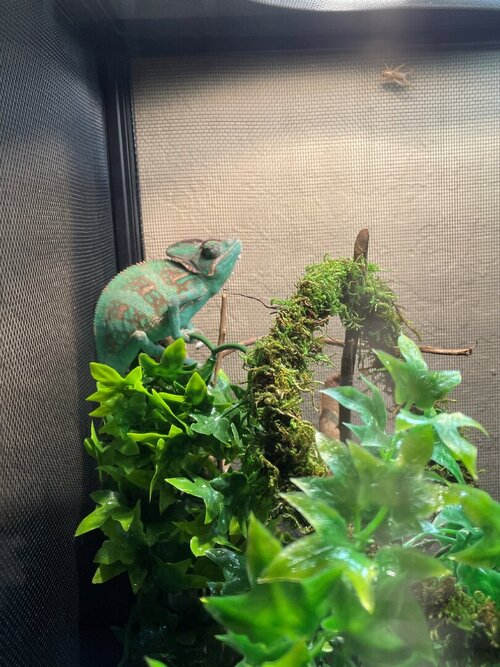Haleyr220
Member
To start, he is eating. His color is still bright green.
HOWEVER, about a week ago, I noticed he was sleeping a lot more than normal. It would be about 12-14 hours every day.
This morning, he's awake and up at the top but he looked at first like he was basking in the light at the top. I noticed his eyes shut like he's really just enjoying it.
BUT then, with his eyes closed he started like loosing grip or strength, not falling but loosing himself. His head dropped and his eye hit a stick and now that eye looks like its sticking out further than the other and he won't open it, but the other eye is open. He keeps loosing his grip and turning his head really weirdly and rubbing it against the leaves. He is stretching up on his back legs and breathing weirdly to where he is inhaling that I can see his ribcage outline. Again, he is still eating and still green. He even let me come near him without hissing at me. I have a video but I can't get it uploaded.
A lot of clinics can't even see him for a couple of days. One can see him tomorrow, but won't tell me any advice or hear what's happening as a description, they only want my deposit, no symptoms no nothing and no advice for him for me until the appointment.
This pictures is the one with the eye he won't open. I think there is some white stuff around that side of his nose too that isn't on the other... He's about 7 months old. He seemed just fine until just today. He's not lying around the bottom, he is at the top still.
HOWEVER, about a week ago, I noticed he was sleeping a lot more than normal. It would be about 12-14 hours every day.
This morning, he's awake and up at the top but he looked at first like he was basking in the light at the top. I noticed his eyes shut like he's really just enjoying it.
BUT then, with his eyes closed he started like loosing grip or strength, not falling but loosing himself. His head dropped and his eye hit a stick and now that eye looks like its sticking out further than the other and he won't open it, but the other eye is open. He keeps loosing his grip and turning his head really weirdly and rubbing it against the leaves. He is stretching up on his back legs and breathing weirdly to where he is inhaling that I can see his ribcage outline. Again, he is still eating and still green. He even let me come near him without hissing at me. I have a video but I can't get it uploaded.
A lot of clinics can't even see him for a couple of days. One can see him tomorrow, but won't tell me any advice or hear what's happening as a description, they only want my deposit, no symptoms no nothing and no advice for him for me until the appointment.
This pictures is the one with the eye he won't open. I think there is some white stuff around that side of his nose too that isn't on the other... He's about 7 months old. He seemed just fine until just today. He's not lying around the bottom, he is at the top still.


